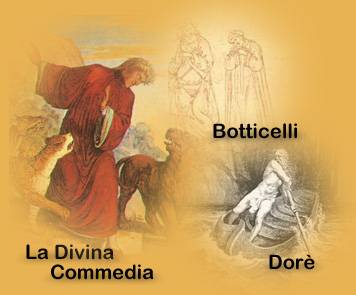
This video below will tell us more about it. Allegorically, the Divine Comedy represents the journey of the soul towards God, with the Inferno describing the recognition and rejection of sin. In the poem, Hell is depicted as nine circles of suffering located within the Earth. It is an allegory telling of the journey of Dante through Hell, guided by the Roman poet Virgil. Inferno is the first part of this epic poem. So it has a happy ending and is not a tragedy. It’s a comedy in the sense that Dante, the main character, journeys upward from Hell, through Purgatory, to Heaven, and not the other way around. SCAGLIONE Despite the impressive proportions that literary scholarship has attained on every aspect of Dantes work, major or minor, two important questions, con-cerning his use of linguistic and metrical structures respectively, seem to have been only tentatively explored so far. The Comedy, as he titled it, doesn’t have one single joke. It does a fine job interlocking the 3-line stanzas. This epic poem is so important that is studied in all the Italian licei and istituti (higher secondary schools) irrespective of the stream (science, fine arts, music, human sciences, human sciences and of course linguistic) so every single Italian student has to study it and memorize some of it…Personally, I hated it back then, but thankfully things change in life! 🙂ĭante invented terza rima for the purpose of this epic poem, a rhyme scheme still popular and widespread today. These are the opening lines of the Divina Commedia, the finest work in the Italian language written in the 14th century by Dante Alighieri also called “ il Sommo Poeta” ie “the Supreme Poet”.


“In the middle of the journey of our life Nel mezzo del cammin di nostra vita mi ritrovai per una selva oscura ché la diritta via era smarrita…


 0 kommentar(er)
0 kommentar(er)
